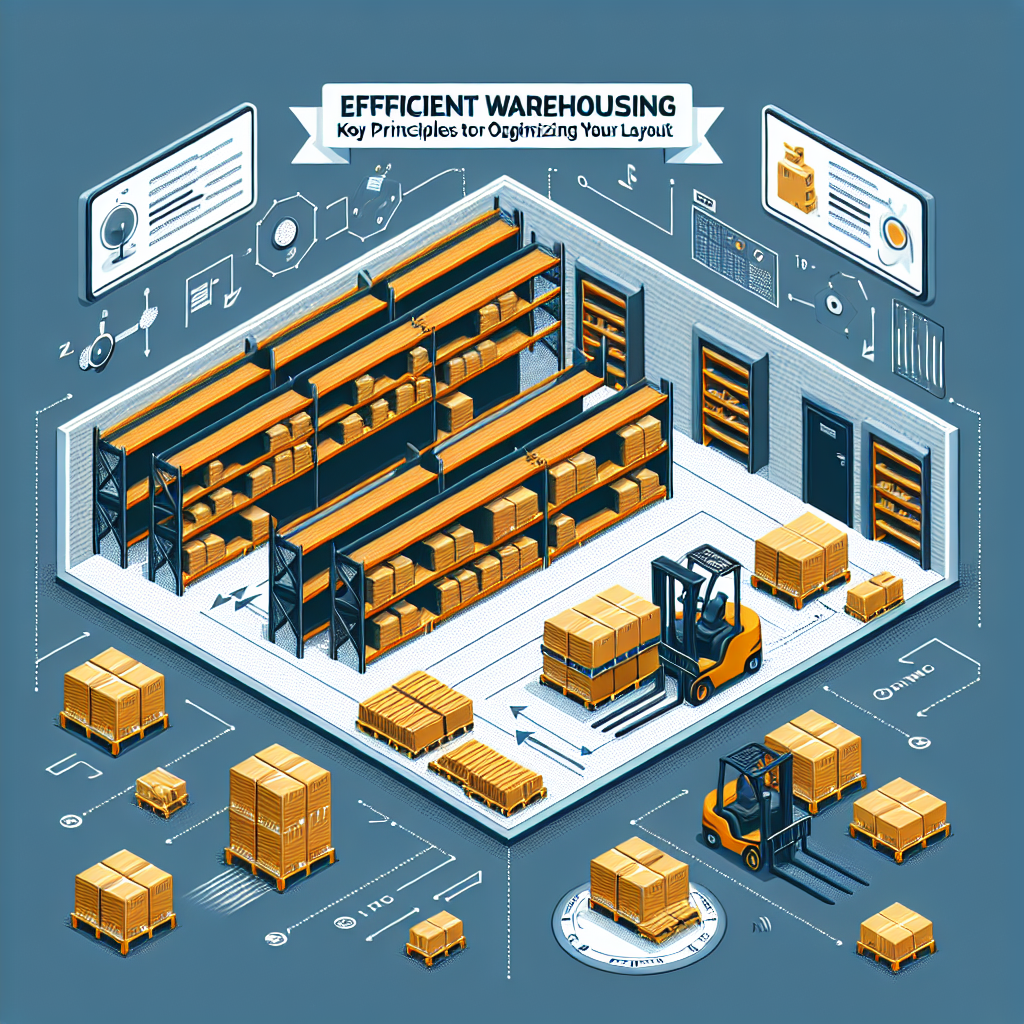In today’s fast-paced business environment, efficient warehousing plays a pivotal role in the supply chain. An optimized warehouse layout not only enhances productivity but also reduces operational costs, improves employee morale, and accelerates fulfillment processes. Whether you run a small business or oversee a vast distribution center, implementing key principles for an efficient warehouse layout can lead to significant improvements. Let’s explore these principles and see how they can transform your warehousing operations.
Understanding the Importance of Warehouse Layout
Before diving into the optimization techniques, it’s crucial to understand why warehouse layout matters. A well-structured layout facilitates smooth operations, minimizes the distance traveled by staff, and enhances inventory management. Conversely, a poorly organized warehouse can result in delays, mistakes, and ultimately, reduced customer satisfaction. With the right warehouse layout, businesses can streamline processes and create a more agile and responsive operation.
Assess Your Current Layout
Identify Bottlenecks and Challenges
The first step to optimizing your warehouse layout is to assess the current state. Walk through your facility and observe the workflow. Are there areas where staff frequently encounter delays? Is there a common location for accidents or misplaced items? Identifying these bottlenecks is essential for understanding where improvements need to be made.
Gather Employee Feedback
Your employees are on the front lines and can provide invaluable insights into the challenges faced in the current setup. Conduct surveys or hold meetings to gather their thoughts on the flow of work, efficiency, and any suggestions for improvement. Engaging your team not only empowers them but can lead to innovative solutions you might not have considered.
Design with Purpose
Optimize Aisle Width and Layout
One of the basic principles of warehouse layout optimization is aisle design. The width of your aisles can significantly impact productivity. Wider aisles are beneficial for larger equipment, but they also consume precious floor space. Conversely, narrow aisles can increase congestion. Aim for a balance that accommodates your workflow while maximizing storage efficiency.
Implement Zone Designation
To create an organized layout, consider zoning your warehouse. By grouping items based on size, weight, and fulfillment frequency, you can minimize unnecessary movements. For example, high-demand products should be stored closer to the packing and shipping areas, while slow-moving items can be placed further back. This zoning strategy reduces travel time, making your operations more efficient.
Incorporate Technology
Use Warehouse Management Systems (WMS)
Investing in a Warehouse Management System (WMS) can provide real-time data on inventory levels, order statuses, and employee productivity. A WMS can also help you analyze your warehouse layout and identify areas for improvement. By leveraging data, you can make informed decisions that enhance operational efficiency.
Leverage Automation
Automation has transformed many warehousing processes. Consider implementing automated picking systems, conveyor belts, or robotics. These technologies can accelerate order fulfillment, reduce human error, and lower operational costs. However, ensure that the integration of these technologies aligns with your layout for maximum effectiveness.
Focus on Safety and Ergonomics
Create Safe Work Environments
An optimized warehouse layout isn’t solely about speed; safety is paramount. Ensure that your layout complies with safety regulations and best practices. This includes clear signage, appropriate lighting, and accessible fire exits. Regular safety training and drills should also be part of your warehouse operations to keep your team informed and safe.
Ergonomic Design
Focusing on ergonomics can drastically improve employee productivity and reduce workplace injuries. Evaluate the design of workstations and ensure they are user-friendly. Incorporate adjustable shelving and tools that minimize reaching and bending. A comfortable employee is a productive employee, and investing in ergonomic solutions is key to a successful warehouse.
Continuous Improvement
Regularly Review Your Layout
Warehousing needs evolve over time due to changes in demand, the introduction of new products, or shifts in technology. Regularly review and adjust your warehouse layout to adapt to these changes. Engaging in continuous improvement helps maintain efficiency and keeps your operations aligned with business goals.
Embrace Employee Input
As you continue to adjust your layout, continue to gather feedback from your employees. They can provide insights into the effectiveness of recent changes and suggest further refinements. An open line of communication promotes a culture of improvement and demonstrates that you value their input.
Conclusion
Efficient warehousing is key to a successful supply chain strategy. By focusing on the principles of layout optimization—assessing your current setup, designing with purpose, incorporating technology, prioritizing safety and ergonomics, and embracing continuous improvement—you can enhance your operations and drive productivity. Remember, a well-structured layout not only benefits your business but also creates a more engaging and rewarding environment for your team. Transform your warehouse into a hub of efficiency and watch your business thrive!


